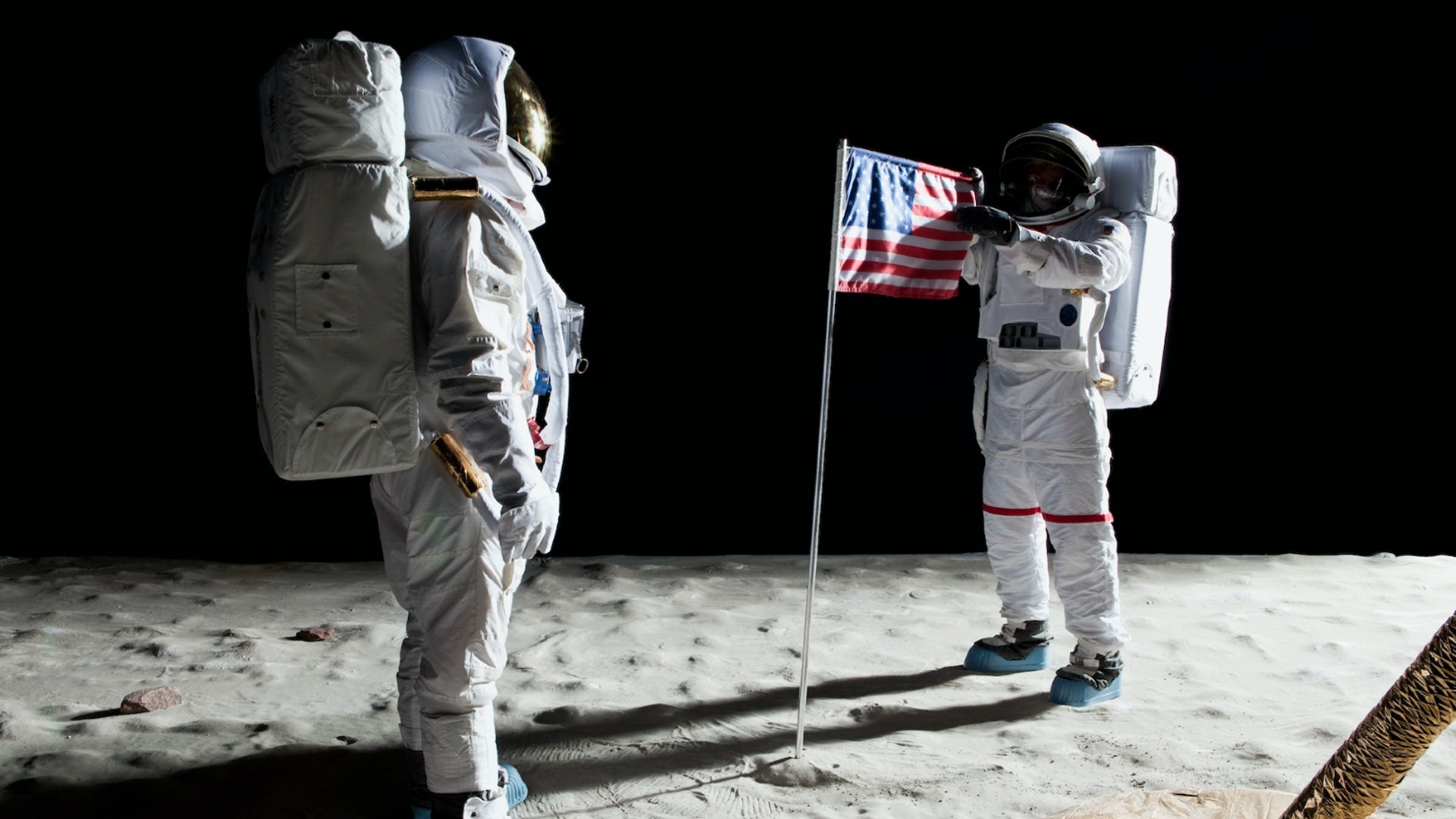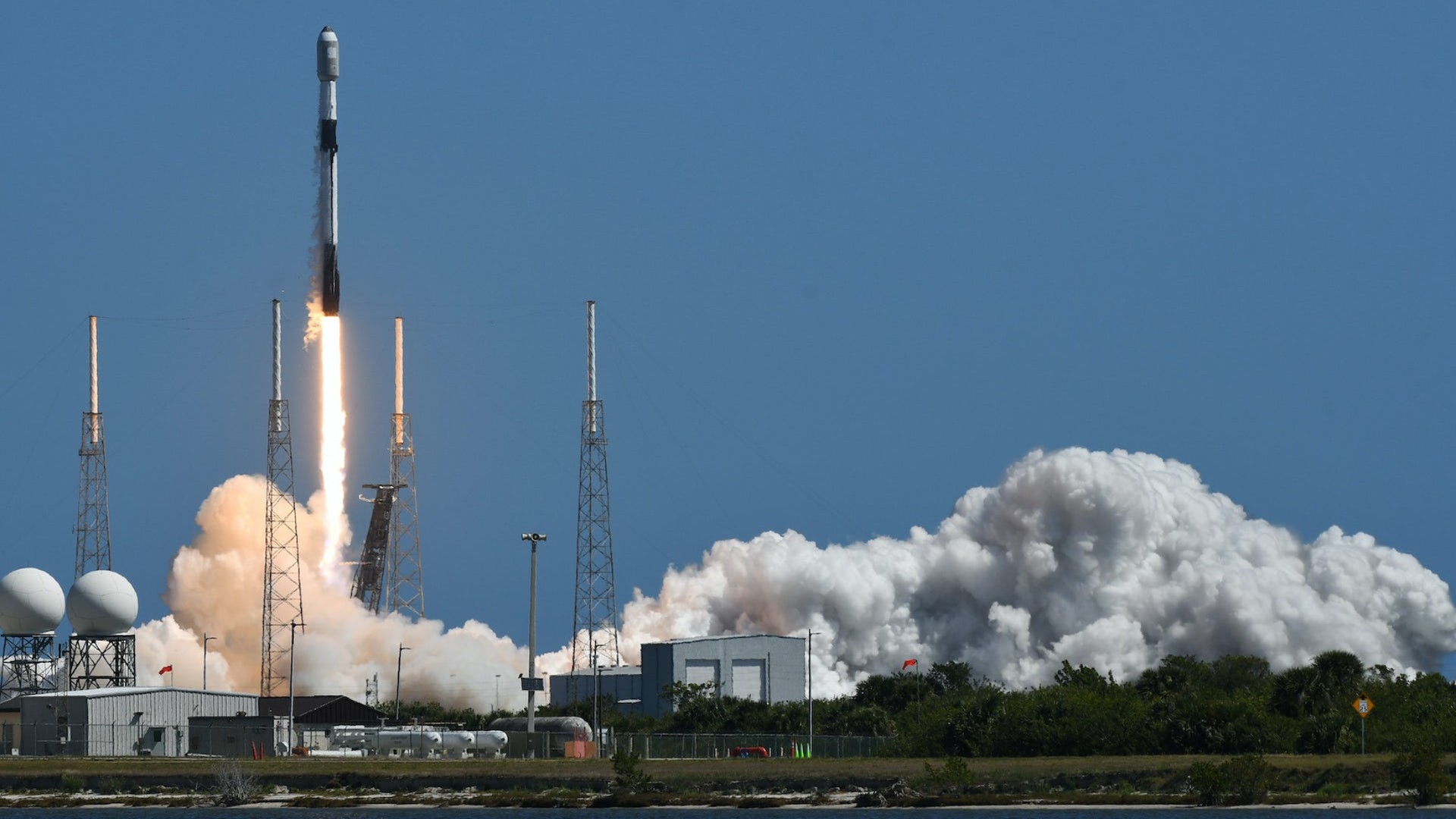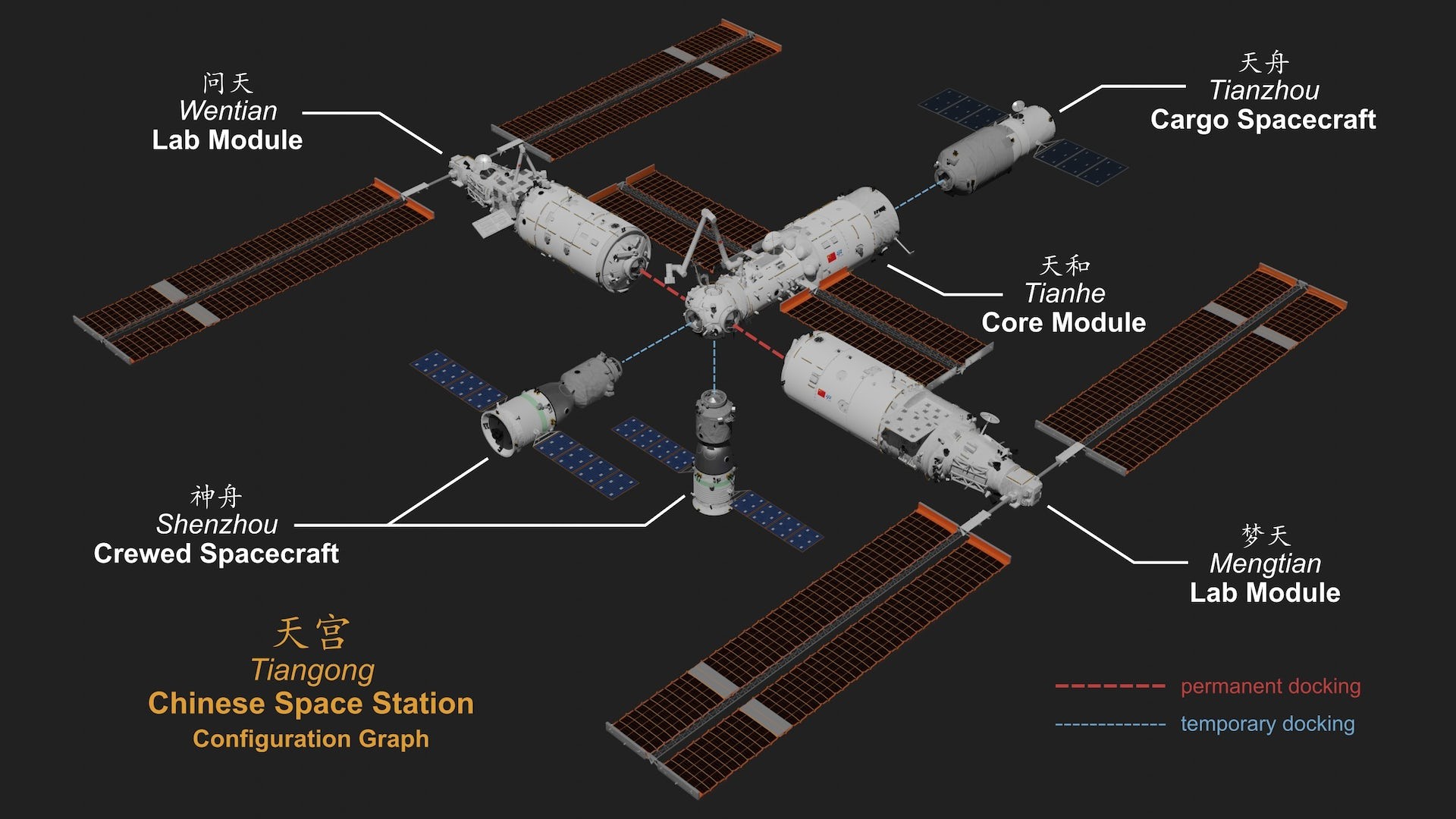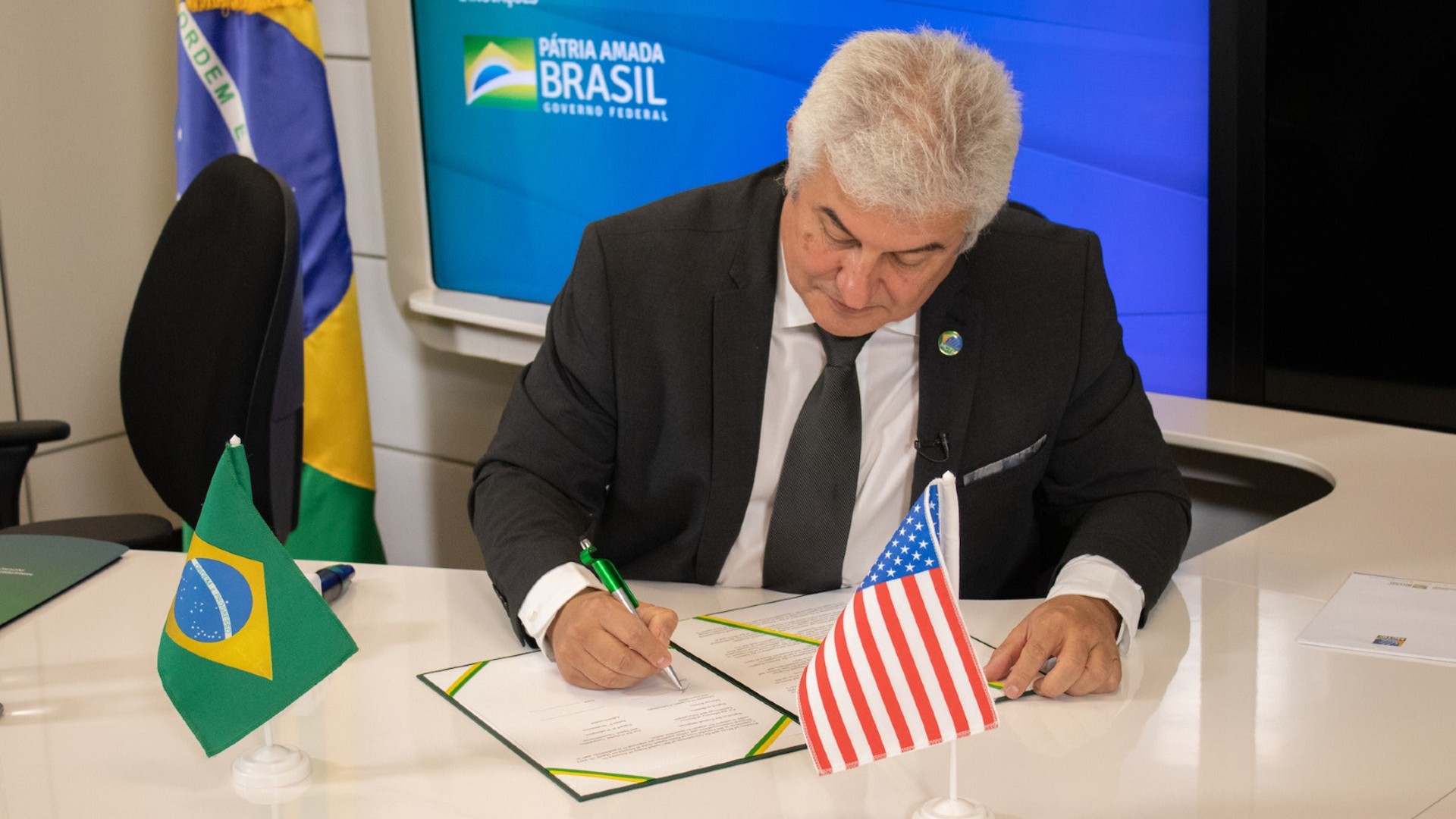
Is the US in a space race against China?
This idea of a space race between China and the U.S. sounds convincing given the broader narrative of China's rise, but how accurate is it?

This article was originally published at The Conversation. The publication contributed the article to Space.com's Expert Voices: Op-Ed & Insights.
Headlines proclaiming the rise of a new "space race" between the U.S. and China have become common in news coverage following many of the exciting launches in recent years. Experts have pointed to China's rapid advancements in space as evidence of an emerging landscape where China is directly competing with the U.S. for supremacy.
This idea of a space race between China and the U.S. sounds convincing given the broader narrative of China's rise, but how accurate is it? As a professor who studies space and international relations, my research aims to quantify the power and capabilities of different nations in space. When I look at various capacities, the data paints a much more complex picture than a tight space race between the U.S. and China. At least for now, the reality looks more like what I call a complex hegemony – one state, the U.S., is still dominating in key space capabilities, and this lead is further amplified by a strong network of partners.

A clear leader makes for a boring race
Calling the current situation a race implies that the U.S. and China have roughly equal capabilities in space. But in several key areas, the U.S. is far ahead not only of China, but of all other spacefaring nations combined.
Starting with spending: In 2021, the U.S. space budget was roughly $59.8 billion. China has been investing heavily in space and rocket technology over the last decade and has doubled its spending in the last five years. But with an estimated budget of $16.18 billion in 2021, it is still spending less than a third of the U.S. budget.
The U.S. also leads significantly in the number of active satellites. Currently, there are 5,465 total operational satellites in orbit around Earth. The U.S. operates 3,433, or 63% of those. In contrast, China has 541.
Similarly, the U.S. has more active spaceports than China. With seven operational launch sites at home and abroad and at least 13 additional spaceports in development, the U.S. has more options to launch payloads into various orbits. In contrast, China has only four operational spaceports with two more planned, all located within its own territory.
Get the Space.com Newsletter
Breaking space news, the latest updates on rocket launches, skywatching events and more!
Parity with nuance
While the U.S. may have a clear advantage over China in many areas of space, in some measures, the differences between the two countries are more nuanced.
In 2021, for instance, China attempted 55 orbital launches, four more than the U.S's 51. The total numbers may be similar, but the rockets carried very different payloads to orbit. The vast majority – 84% – of Chinese launches had government or military payloads intended mostly for electronic intelligence and optical imaging. Meanwhile, in the U.S., 61% of launches were for nonmilitary, academic or commercial use, predominantly for Earth observation or telecommunications.
Space stations are another area where there are important differences hiding beneath the surface. Since the 1990s, the U.S. has worked with 14 other nations, including Russia, to operate the International Space Station. The ISS is quite large, with 16 modules, and has driven technological and scientific breakthroughs. But the ISS is now 24 years old, and participating nations are planning to retire it in 2030.

The Chinese Tiangong space station is the new kid on the block. Construction was only completed in late 2022, and it is much smaller – with only three modules. China has built and launched all of the different parts and remains the sole operator of the station, despite having invited others to join.
China is undoubtedly expanding its space capabilities, and in a report published in August 2022, the Pentagon predicted that China would surpass U.S. capabilities in space as early as 2045. However, it is unlikely that the U.S. will remain stagnant, as it continues to increase funding for space.
Allies as force multipliers
A major point of difference between the U.S. and China is the nature and number of international collaborations.
For decades, NASA has been fruitfully cultivating international and commercial partnerships in everything from developing specific space technologies to flying humans into space. The U.S. government has also signed 169 space data sharing agreements with 33 states and intergovernmental organizations, 129 with commercial partners and seven with academic institutions.
China also has allies that help with space – most notably Russia and members of the Asia-Pacific Space Cooperation Organization, including Iran, Pakistan, Thailand and Turkey. China’s collaborators are, however, fewer in number and have far less developed space capabilities.

Efforts to return to the surface of the moon excellently highlight this difference in ally support and synergy. Both the U.S. and China have plans to send people to the surface of the moon and to establish lunar bases in the near future. These competing lunar aims are often cited as evidence of the space race, but they are very different in terms of partnerships and scope.
In 2019, Russia and China agreed to jointly go to the moon by 2028. Russia is contributing its Luna landers and Oryol crewed orbiters, while China is improving its Chang'e robotic spacecraft. Their future International Lunar Research Station is "open to all interested parties and international partners," but, to date, no additional countries have committed to the Chinese and Russian effort.
In contrast, since 2020, 24 nations have joined the U.S.-led Artemis Accords. This international agreement outlines shared principles of cooperation for future space activity and, through the Artemis Program, specifically aims to return people to the Moon by 2025 and establish a Moon base and lunar space station soon after.
In addition to the broad international participation, the Artemis Program has contracted with a staggering number of private companies to develop a range of technologies, from lunar landers to lunar construction methods and more.
China is not the only game in town
While China may seem like the main competitor of the U.S. in space, other countries have space capabilities and aspirations that rival those of China.
India spends billions on space and plans to return to the moon, possibly with Japan, in the near future. South Korea, Israel, Japan, the United Arab Emirates, Turkey, Germany and the European Union are also planning independent lunar missions. Japan has developed impressive technological space capabilities, including rendezvous proximity technology to send a spacecraft to an asteroid and bring samples back to Earth, that rival and even surpass those of China.
In the past, the space race was about who could reach the stars first and return home. Today, the goal has shifted to surviving and even thriving in the harsh environment of space. I believe it is not surprising that, despite its decisive lead, the U.S. has partnered with others to go to the Moon and beyond. China is doing the same, but on a smaller scale. The picture that emerges is not of a “race” but of complex system with the U.S. as a leader working closely with extensive networks of partners.
This article is republished from The Conversation under a Creative Commons license. Read the original article.
Follow all of the Expert Voices issues and debates — and become part of the discussion — on Facebook and Twitter. The views expressed are those of the author and do not necessarily reflect the views of the publisher.
Join our Space Forums to keep talking space on the latest missions, night sky and more! And if you have a news tip, correction or comment, let us know at: community@space.com.

Dr. Svetla Ben-Itzhak is an Assistant Professor of Space Seminar and International Security at Air University with the West Space Seminar, Air War College. Prior to this position, she taught for many years at Kansas State University. She has developed and taught classes on space security, international security, global security threats, US politics, and applied linguistics, among others. Svetla earned a Ph.D in political science, international relations and U.S. politics for the University of Kansas. She holds an master's degree in political science from Kansas State University as well as masters and bachelors degrees in applied linguistics and scientific translation. For more information, check her website
-
orsobubu i think there is something strange in outside orbit manned missions, specifically imo apollo were only robotic spaceships, anyway, highest probability is a major, catastrophic accident in deep space, and after that there is going to be a huge setback for the entire space exploration sector due to lack of public support, coupled with geostrategic crisis that surely will kick in next 10 years or so, with a great role for the outer space warfareReply -
bwana4swahili China (and India) have aspirations for space travel just like the USA. If China has this as a goal, you can bet they'll be gaining ground in this area with a gusto. Want to call it a 'race', it probably is.Reply









